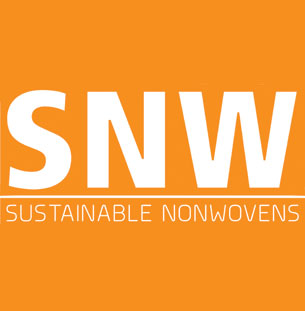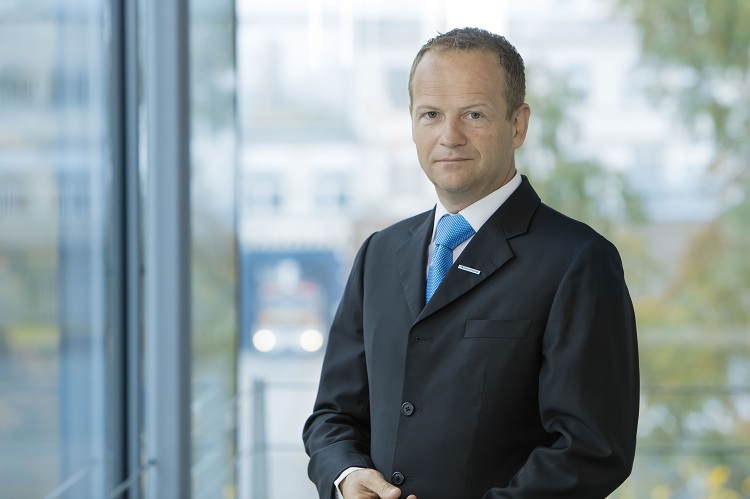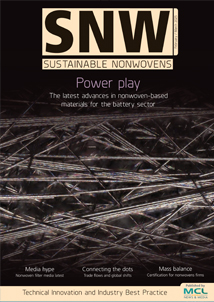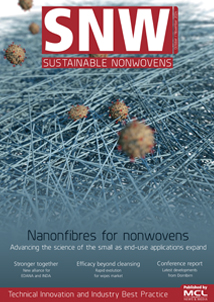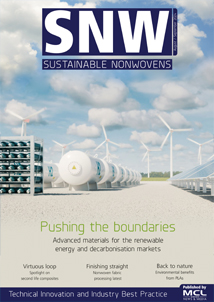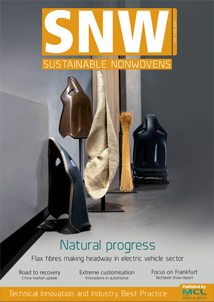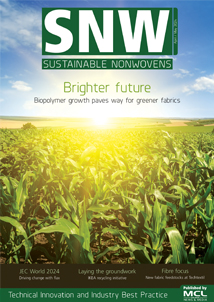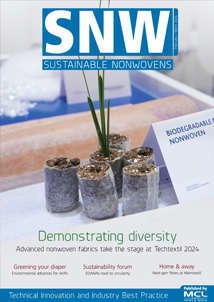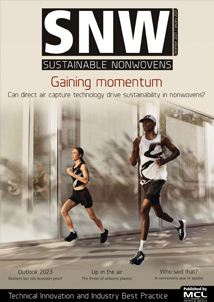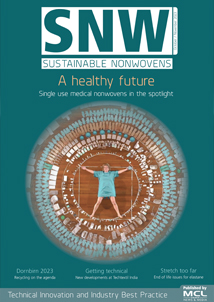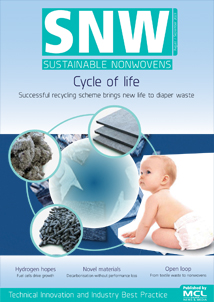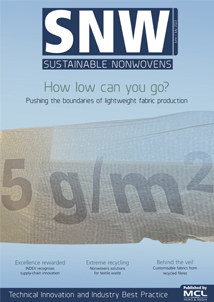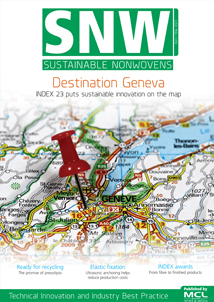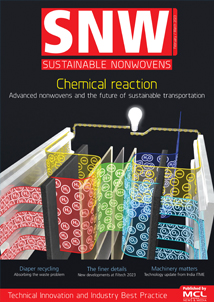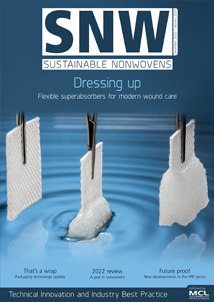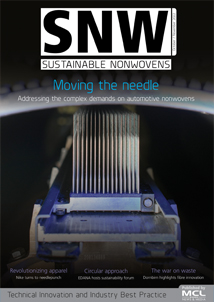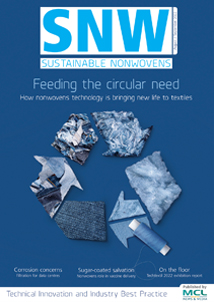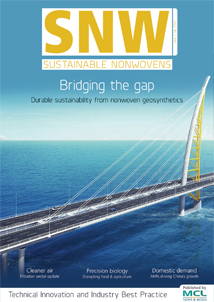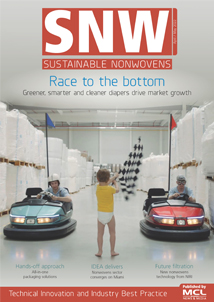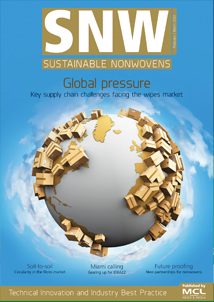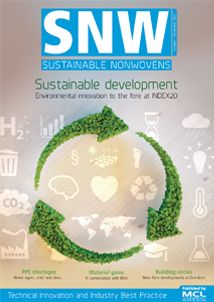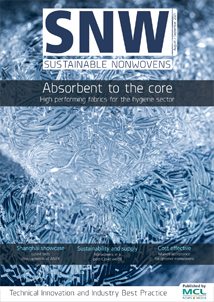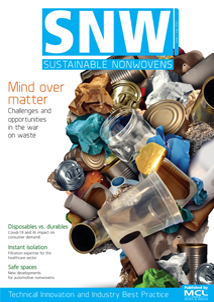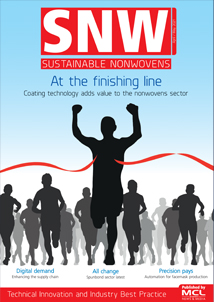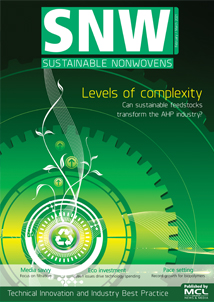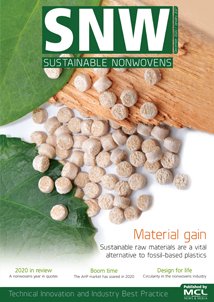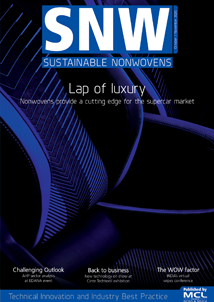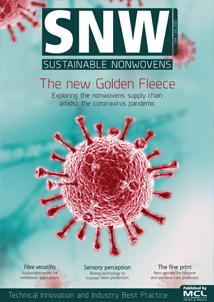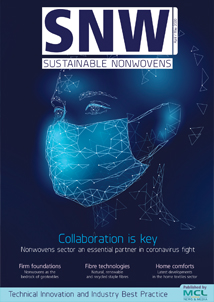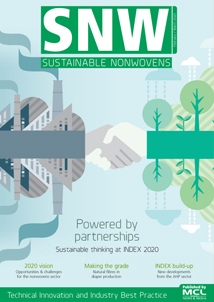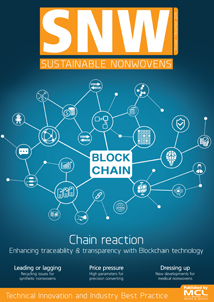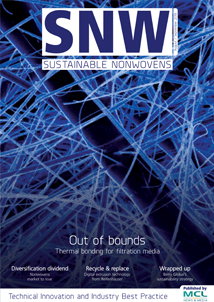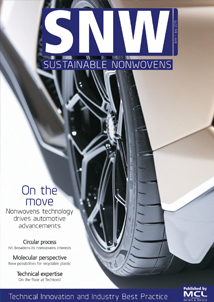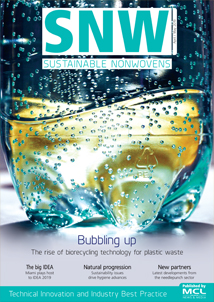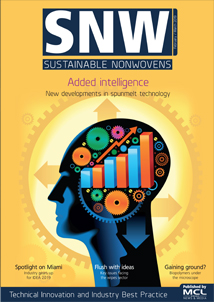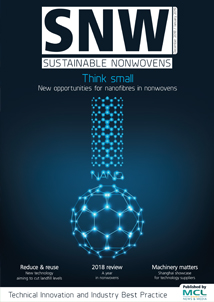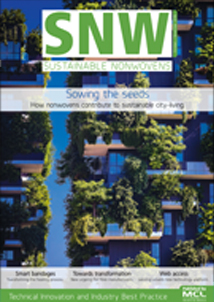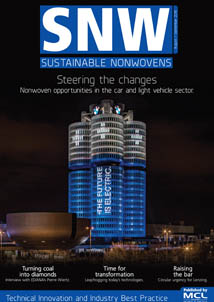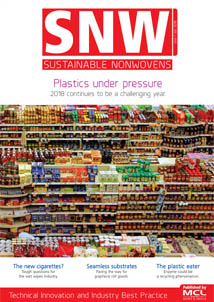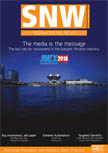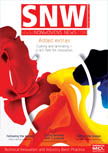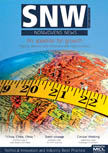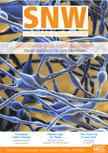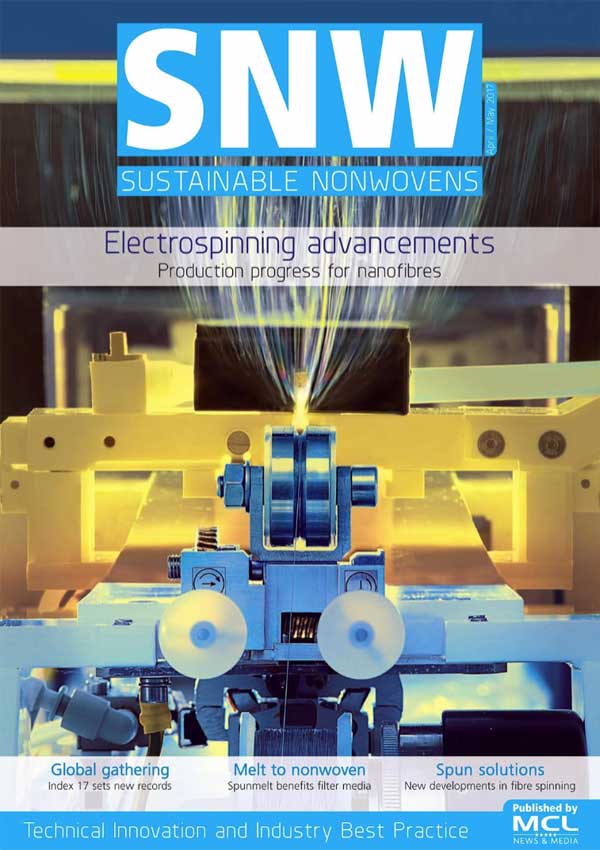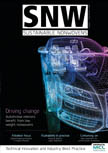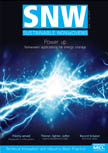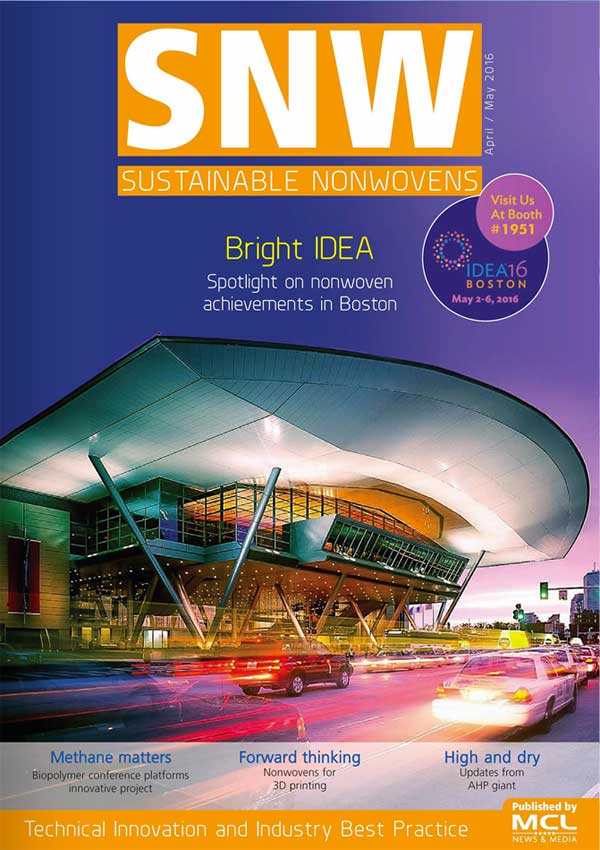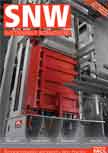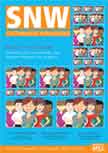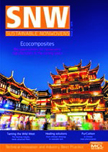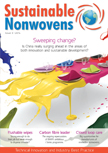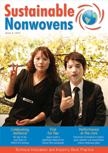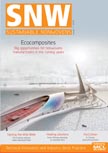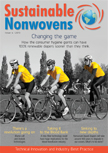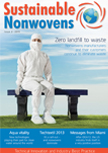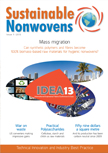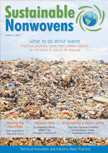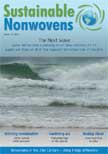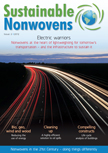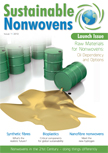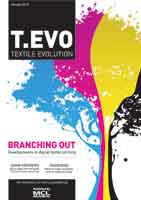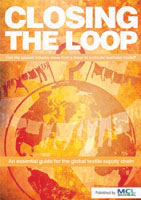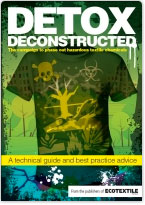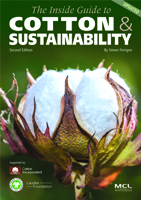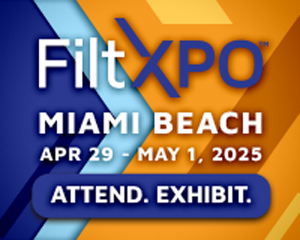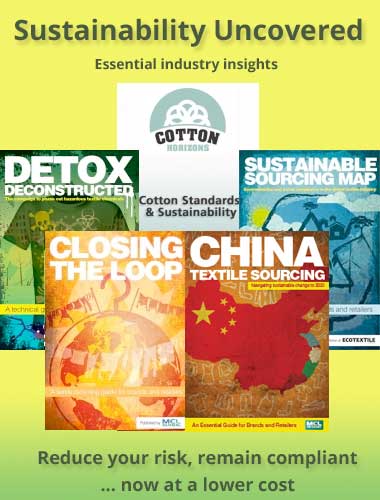Ten questions for… Dr Frank Heislitz, CEO, Freudenberg Performance Materials.
Sustainable Nonwovens: Congratulations on your appointment as CEO at Freudenberg Performance Materials. As you take the reins, how do you see the current market for nonwovens overall, and how do you expect 2018 to compare to the company’s performance in 2017?
Frank Heislitz: Thank you! As you know, Freudenberg Performance Materials is active in a wide range of diverse markets. For instance, the automotive, medical and energy markets are growing ones this year for sure. Nevertheless, we expect our business environment to be a little challenging and price increases for raw materials are likely to happen this year, since it seems the global economy will continue to grow. However, we aim to improve our overall performance with innovations like our comfortemp fiberball padding eco. Likewise, we have successfully launched a new spunbonding line at our site in Macon, USA, and we hope to reap the first fruits of this investment within the market for roofing membrane substrate materials made from 100% recycled PET. At the same time, we are investing in the future. One example is our project start to build a new production line in Taiwan. This will strengthen our automotive and carpet business in Asia.
SNW: The automotive business is a significant sector for Freudenberg Performance Materials and your recent announcement of a capacity expansion in Taiwan suggests it is booming in Asia. Is this growth everywhere, or is a lot of business still migrating from the traditional markets?
FH: Freudenberg produces at its sites for regional markets. The investment is due to growth. The automotive industry is facing unprecedented change that offers many opportunities and sustainability is one of the major trends driving our automotive business. Therefore, weight reduction is one of the key topics – whether it’s about cars with combustion engines or e-cars – and this is a big opportunity for innovative nonwoven solutions. They reduce the total weight of vehicles and contribute significantly to fuel-saving and therefore to reduced CO2 emissions in traditional cars. Likewise, in e-cars they contribute to less energy consumption, which helps to improve the range of the cars. I am sure nonwovens will replace an increasing number of the established materials in the future.
SNW: The new Taiwan plant will also manufacture nonwovens for the tufted carpet backings sector. What do you see as the key benefits of tufted carpet over needlepunched flooring and other alternatives in residential and commercial buildings?
FH: Our carpet business is based on our polyester spunlaid technology, which is one of our core technologies and businesses. This technology is an important foundation in order to fulfil our future costumer requirement and to achieve a high customer satisfaction. Whether in cars or in buildings, tufted carpets have a substantially better look and feel and they contribute to a luxury atmosphere of wellbeing. Let me give you a real life example western people experience a lot. Every year they buy a Christmas tree and put it in their car boot to bring it home. If the car boot is equipped with tufted carpets, no problem. If they have a needlepunched boot liner, they won’t be able to completely remove the needles the tree has shed during the journey. The same applies when the tree is standing in a carpeted living room. In addition, tufted carpets are more abrasion resistant.
SNW: As the former chief technology officer for the company, you have been very close to new developments and one area of focus has been on materials for electric vehicles and alternative propulsion methods for transportation. What are your key products in this field?
FH: We at Freudenberg have a strong innovation culture that is resulting in new products for the new mobility market. With our decade-long experience in the battery market, we have developed ultra-thin battery separators made from ceramic-impregnated polyester nonwovens. Although battery-powered vehicles have been in use for some time now, there is still a scope for improvement in terms of battery capacity and safety. The thermal instability of battery separators is one of the safety risks, and may lead to fires and explosions. Our ‘Safety Separators’, as we call them, remain stable at high temperatures and do not shrink. In addition, they are significantly less sensitive to external mechanical stresses than other products. Our latest development of a thinner separator can also contribute to a higher energy density in new batteries, which is one of the major trends and demands from all manufacturers of electric cars.
Looking ahead, different technologies will complement each other in the new mobility market. That's one reason why we have been researching improvements in fuel cell technology for the last 20 years. Today, we are one of the few manufacturers worldwide with the capacities required for the series production of gas diffusion layers for fuel cells. Compared to battery-powered cars, vehicles with fuel cell powertrains have a longer range. They can also be refuelled in only a few minutes and are therefore also suitable for buses and trucks. Our gas diffusion layers ensure that the hydrogen fuel is being converted into power as efficiently as possible. In addition, they have a three-dimensional fibre structure and a chemically-stable coating of electrically conductive carbon particles, which make them highly functional.
And I would like to share one more topic. It is about the importance of taking a holistic approach to CO2 reduction through new mobility. This means including energy supply and infrastructure. To compensate for fluctuations in power generation from renewable sources, high-performance redox flow batteries are one way to store energy. In nearly any other field of new mobility efficiency optimisation is key here. Our nonwoven electrodes for these batteries have a unique three-dimensional channel structure that improves liquid flow within the battery. And of course, we keep on optimising them.
SNW: Is it fair to say the electric vehicles market has yet to take off to the extent anticipated some years ago now? And do you sense greater traction, with governments in the UK and France, for example, announcing moves to eventually eliminate the combustion engine within given time frames? What’s the current position in Germany?
FH: Around the world, the markets for electric vehicles are growing at different levels. We are well prepared for the future and in close collaboration with our customers and other stakeholders developing advanced technical solutions.
Above all, the Asian market is already in some kind of swing. In Europe, some countries like Norway are pushing new mobility and the development of the necessary infrastructure more consequently than others. In Germany, however, there are only minor incentives for end consumers to compensate for the higher costs of new mobility. Nevertheless, there are quite a few initiatives to push the issue.
I’d like to give just two examples. We are member of the EU-funded DIGIMAN project, in which our aim is to provide a blueprint to enable the fully automated mass manufacturing of PEM fuel cell stacks for the automotive market. We will demonstrate operational and supply chain cost reduction via seamless integration of digital manufacturing techniques and advanced technology optimised for automated production. Once developed, the blueprint design will enable build-to-print machine configurations with ready-to-scale production capacity to meet the future requirements of more than 50,000 fuel cell stacks by 2020.
The second example is the HiPoLiT project – short for High Power Lithium Technology. In this initiative an industry-led consortium which we are part of, is being supported by the German Federal Ministry of Education and Research in order to work on the challenges of driving material and process development and researching innovative Lithium-ion batteries. Compared to the current state-of-the-art, the batteries developed in this project will feature significantly improved components. These will lead to optimised rapid-charge capability with practice-oriented energy density and lifetime, as well as outstanding safety. To improve the energy density of the batteries, the cell voltage and the proportion of active material in the electrodes will be increased. Another major concern of the project is to reduce the cost of battery production.
SNW: What about the medical sector, which has been another key area of research and product introductions from the company? What are you looking to achieve in this field in the next few years?
FH: Ageing populations and the growing prevalence of diabetes and obesity are worldwide megatrends. These developments have an impact on wound healing since they often lead to chronic wounds. Focusing on modern wound care and applying and broadening our decade long know-how in this field allows us to develop solutions that support a better healing process. Recently, we introduced three innovative solutions – an MDI-based PU foam, laminates comprising hydrophilic PU foams and hydroactive nonwovens, as well as foams with a direct coating of silicone adhesives.
We are one of the first companies to introduce an MDI-based PU foam. It helps our customers to offer modern wound dressings for chronic venous leg ulcers, which absorb wound fluids much faster and have significantly better retention properties. In addition, these wound dressings are much stronger.
We have also developed laminates comprising hydrophilic PU foams and hydroactive nonwovens. The combination of these two components, foam and nonwoven, can achieve a significant improvement in the absorption and retention of wound dressings.
And we introduced foams with a new coating technology for silicone adhesives. Thanks to the adhesive properties of silicone, such coatings not only make it easier to apply the foam dressing, they also minimise trauma during dressing changes.
Another highlight is scaffolene. With this, Freudenberg has created a new spinning technology that offers innovative solutions for many medical challenges – bioresorbable nonwovens.
Under clean room conditions, we process natural or synthetic biopolymers and spin them into nonwovens using a particularly gentle method. With the variable 3D structure of nonwovens and the opportunity to introduce active substances into the fibres during the spinning process, scaffolene technology opens up an incomparably high range of medical applications.
SNW: Interlinings for apparel remain a significant part of the Freudenberg Performance Materials portfolio and lately you’ve diversified with other technologies for this market. Could you tell us a little about the current status of this facet of the business?
FH: Indeed, the apparel business is an important one for us in which we have been active for the last 70 years and which we have decisively influenced. One of the technologies you address is our comfortemp fiberball padding technology. Comfortemp fiberball padding is the world’s first padding made from fibre balls. It ideally combines the benefits of padding and down and is the perfect thermal insulation for sportswear. The growing number of customers who are looking for alternatives to down appreciate it. Since January, we also offer this product in an eco-version and we have had a good customer response, too.
SNW: In respect of sustainable manufacturing, you are perhaps one of the biggest processors and users of recycled polyester. Where and to what extent is recycling carried out and what are the main applications for rPET in your production programmes?
FH: Freudenberg is a pioneer in recycling PET. In the 1990s, we started to recycle post-consumer PET bottles in Italy and today we have a second recycling site in France. This allows us to produce the major part of our products for the construction market from 100% self-recycled PET. Doing this, we reduce CO2 emissions by up to 140 million kilograms per year and reduce water consumption by up to 50% within our production.
Within the automotive and building interiors industries Freudenberg’s tuft backings combine high performance and sustainability – our polyester spunlaids for tuft backings are 100% recyclable and free from chemical binding agents. With this we foster environmentally friendly production processes by enabling customers to recycle waste.
Our latest innovation concerning rPET is comfortemp fiberball padding eco. We have succeeded in achieving the technical feasibility of using recycled fibers in padding, which makes up 80% of the product. The remaining 20% of the padding consists of binder components that are essential for making such coherent structures.
SNW: Synthetic fibres are currently generating a lot of negative attention as a result of microplastics ocean waste. Similarly, the headlines about so-called ‘fatbergs’ from disposables continue to gain unfavourable attention. While these issues may not directly concern Freudenberg, they are damaging for the industry’s image overall. Do you have any thoughts on how more positive messages could be conveyed and get through to the public?
FH: Yes, this is a fair point. Nevertheless, the industry uses a big amount of recycled raw materials. We at Freudenberg are also committed to a more sustainable production. For example, we recycle 2.5 billion PET bottles every year. Laid end to end, that number would go around the earth 15 times. It seems that we all have to bring information like this more to the focus of public attention.
Besides this, there are many other innovative and interesting initiatives worldwide. We are excited about a project that collects waste from the oceans. I’m sure, projects like this will create very positive public attention.
SNW: Finally, what will be your immediate priorities in your new role?
FH: Our aim is to offer customers value added, innovative solutions in order to support their success. This is what we have always have done and will do in the future. Therefore, it’s no surprise that we will keep on focusing on innovation and services. And we will keep on doing this together with our customers.
To ensure that we do this successfully, our employees are a major cornerstone. In the upcoming months I will be travelling to most of our 25 production sites worldwide and discuss our concrete aims. It is important that our employees know our aims and know how we plan to achieve them. If they understand what we stand for they are likely to develop a better understanding of their role in this picture of being innovative and offering differentiated performance materials to meet the needs of our customers – and doing so in a sustainable and socially responsible manner.
